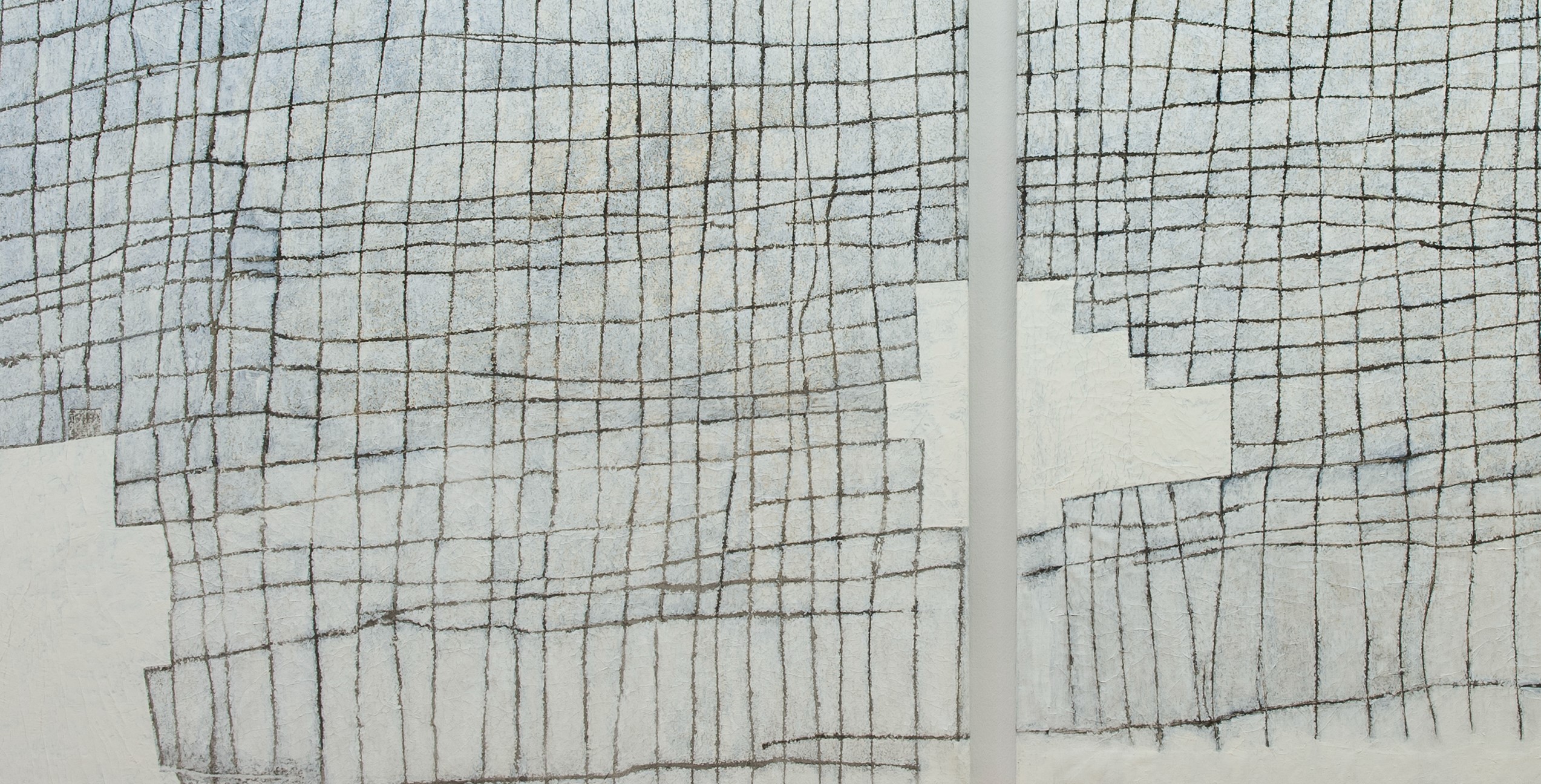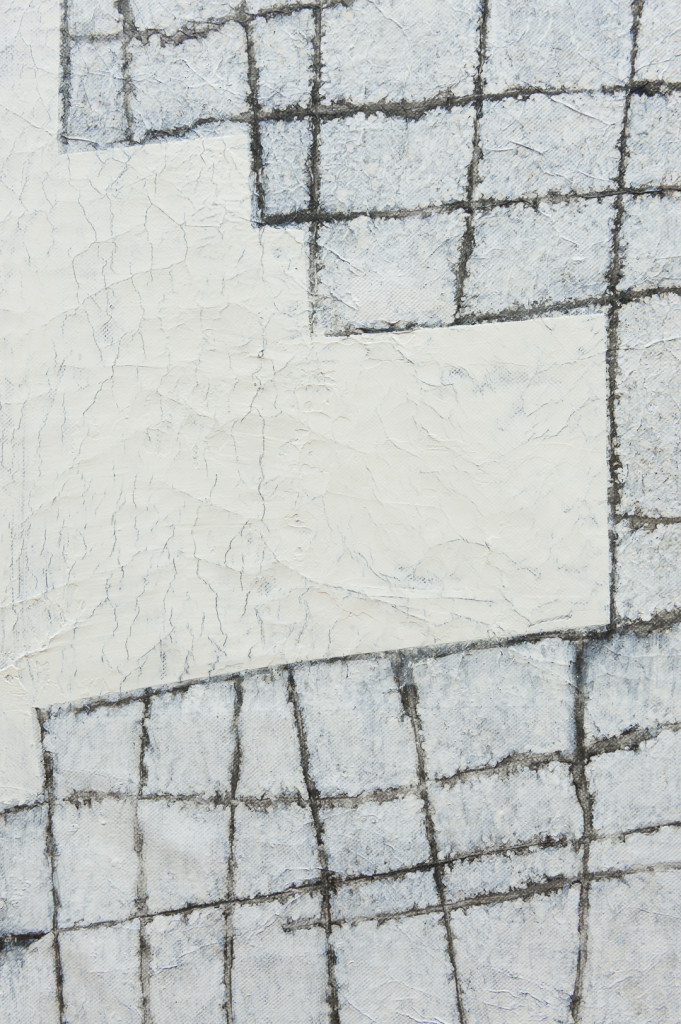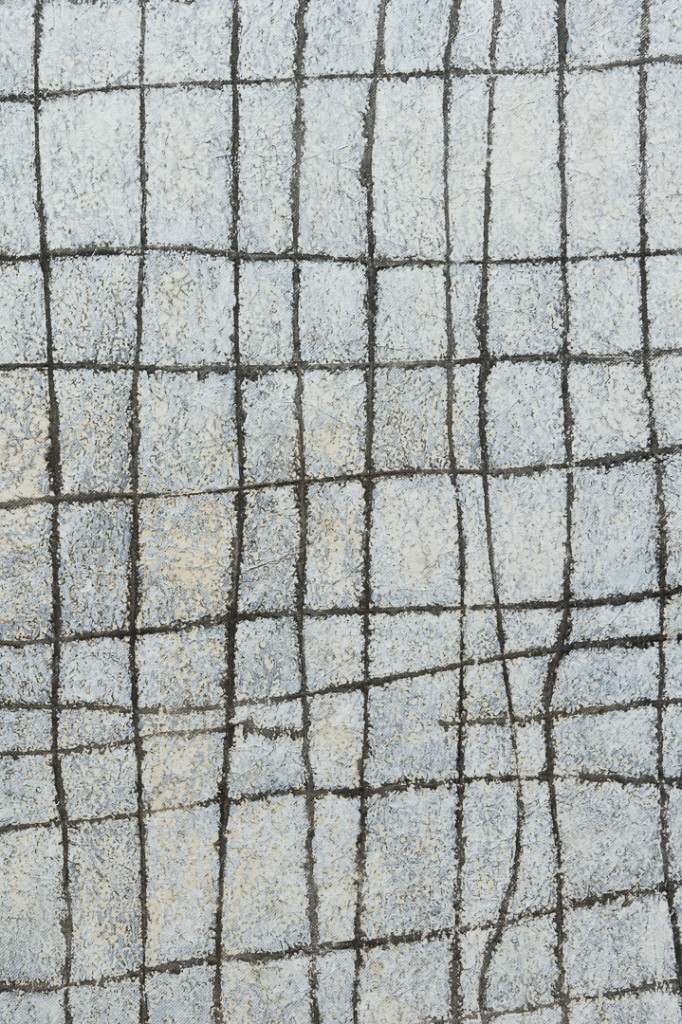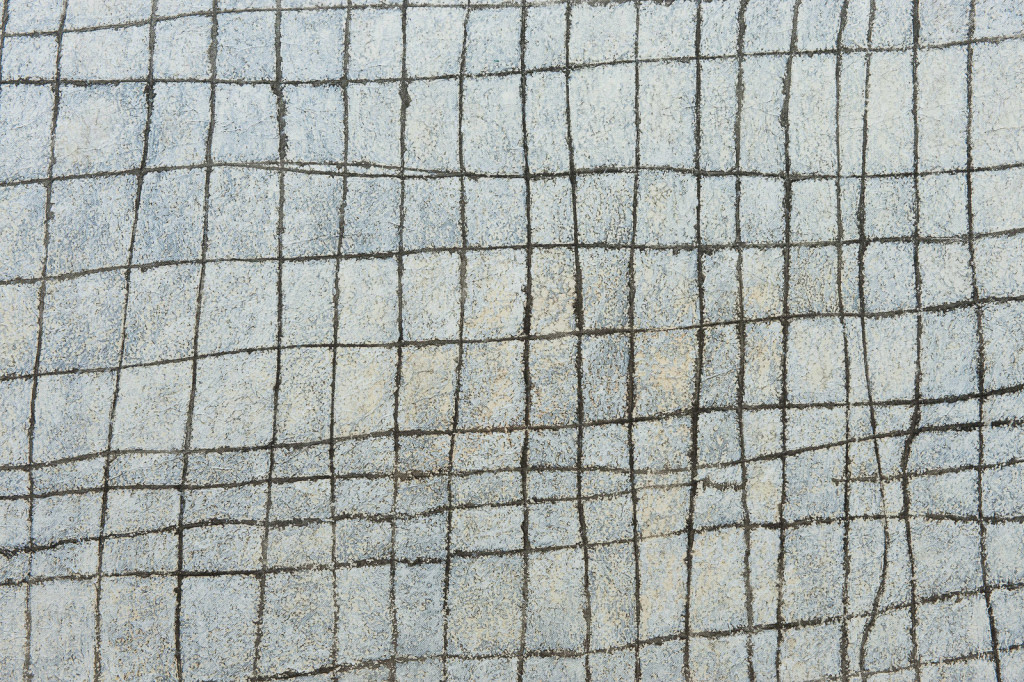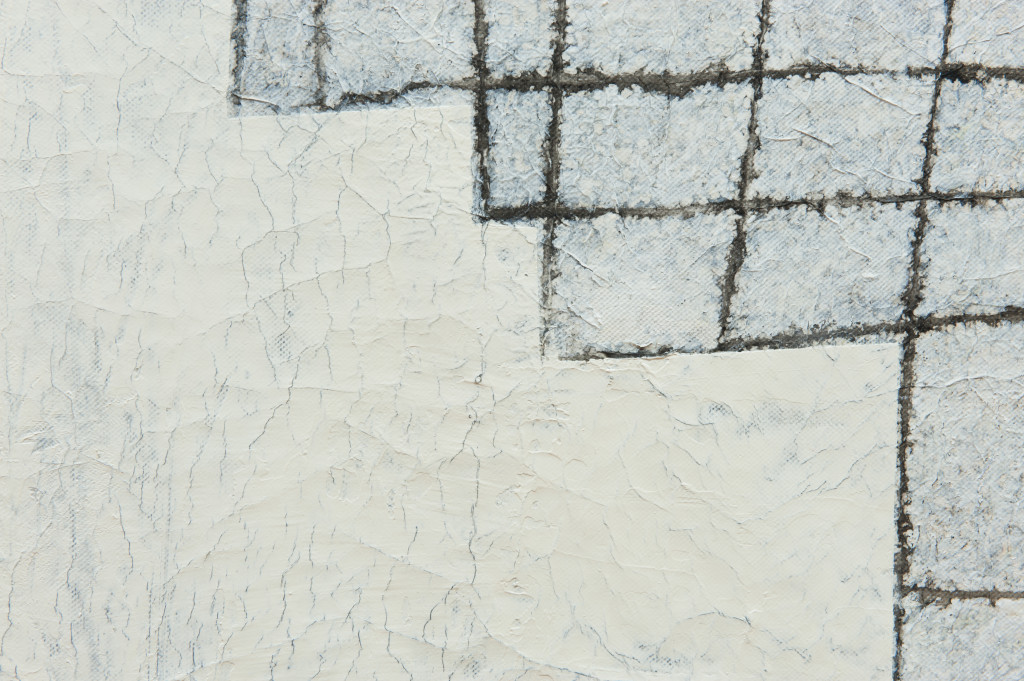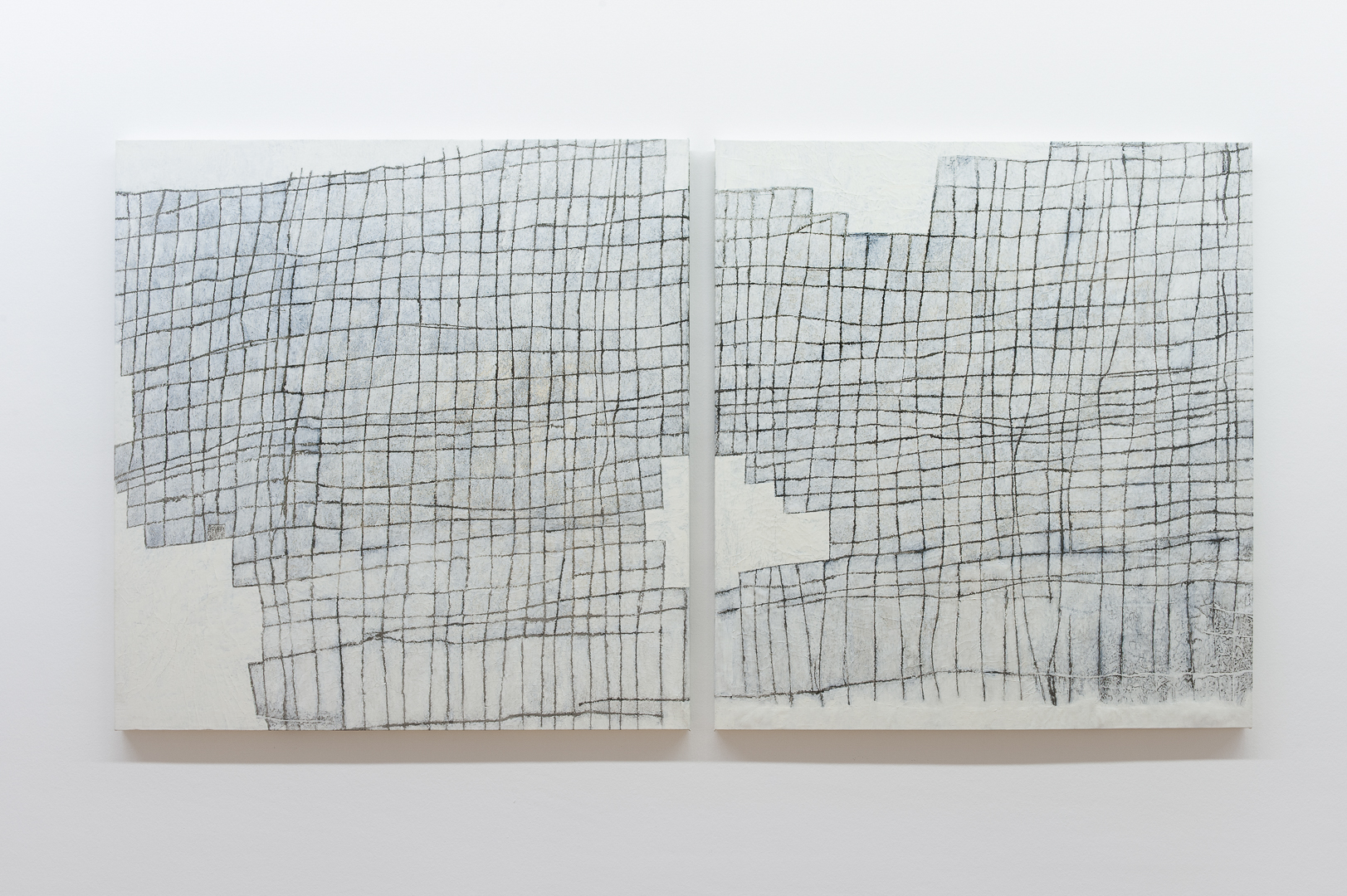Hay Khalil is a transfer print composed of three parts: one horizontal section below and two vertical ones above. Kaabi-Linke frequently works with wall imprints, considering the walls of cities as their “skin,” holding traces that reveal more than is immediately visible.
This black-ink and wax impression comes from an irregular grid of horizontal and vertical lines she found on a wall in Hay Khalil, a neighbourhood on the outskirts of Tunis. The street is extremely busy with shops, cafés, and connecting roads, yet local children met there every day after school to play.
Their meeting spot was marked by an engraved grid—an abstract graffiti reminiscent of a math notebook page. Its irregular lines clearly showed the children’s effort in carving them. The grid functioned as the net of an improvised football goal.
Although safer places to play existed, the children chose this busy street. Like in many Mediterranean countries, children often stay outdoors until late, hinting at unspoken dynamics within each family.
Hay Khalil reflects on these hidden stories from an outsider’s perspective. The work records a trace that suggests concealed truths without revealing them directly.
